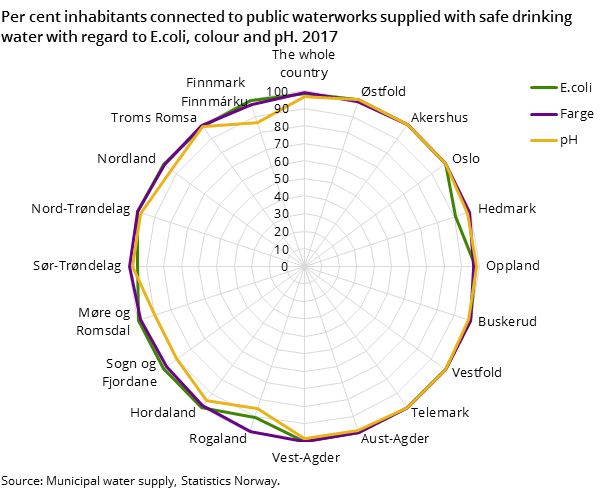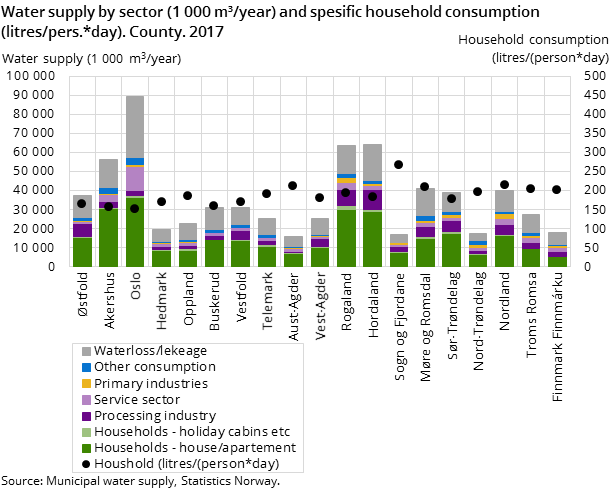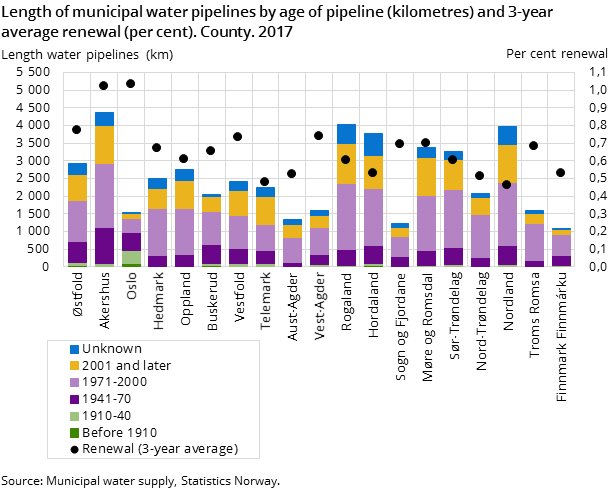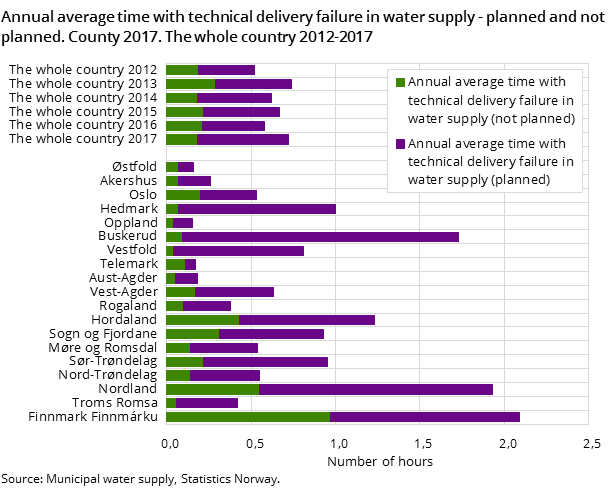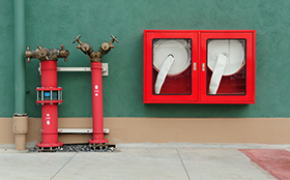Clean tap water for all
Published:
In 2017, around 98 per cent of inhabitants connected to municipal waterworks were supplied with drinking water that was hygienically safe in terms of thermo-tolerant intestinal bacteria (E. coli) content. Around one-third of the water generated by municipal waterworks is estimated to be ‘lost’ through leakage on its ways to consumers.
- Full set of figures
- Municipal water supply
- Series archive
- Municipal water supply (archive)
Furthermore, around 98 per cent of the same inhabitants were supplied with satisfactory water quality in terms of colour, while 97 per cent were supplied with satisfactory water quality in terms of acidity (pH). This is roughly the same level as the year before in terms of both colour and pH, according to updated figures from Municipal water supply.
Leaking water in pipeline system
In 2017, around one in every three litres, or around 30 per cent, of the 680 million cubic metres of drinking water supplied by the municipal waterworks was estimated to be lost through leakage.
The leakage corresponds to 4.3 cubic metres of water per metre of pipeline system. According to KOSTRA figures (system for municipality-state-reporting), the loss through leakage has been relatively stable throughout the last ten years.
In comparison, around 43 per cent of water supplied by municipal waterworks to the pipeline system is consumed by households. An additional 2 per cent is consumed in holiday cottages or holiday homes. This gives a specific water consumption in the households of around 180 litres a day per person.
It has been estimated that around 34 per cent of the connecting households have water metres installed in 2018.
Around 1 100 municipal waterworks
Around 4.5 million inhabitants in Norway were connected to the 1 100 municipal waterworks located around the country in 2017 (not including those serving only schools and kindergartens). This corresponds to a share of 85 per cent of Norway’s population. Dispersed across the water distributing system, this implies an average of 93 inhabitants per kilometre of pipeline. When also including private waterworks, the total is around 4.7 million inhabitants and 1 970 waterworks.
Safety and readiness plans to combat ‘unwanted incidents’
In 2017, almost 95 per cent of the municipal waterworks had a safety and readiness plan aimed at combatting unwanted incidents, e.g. pollution hazards, failures in hygienic barriers and other technical failures, drought/flood and accidents. Furthermore, around 40 per cent of the municipal waterworks carried out safety and readiness training and 60 per cent of them updated their plan.
0.7 per cent of pipelines renewed
The renewal rate of municipal water pipelines varies from one year to another. Calculated as a 3-year moving average for the period 2015-2017, the rate of renewal is 0.66 per cent of the total pipeline system. This is around the same level as the previous 3-year average (2014-16).
The current renewal rate means that it will take almost 150 years to renew the whole pipeline system, assuming that no new pipelines are installed in the coming years.
The length of the municipal water pipelines is estimated to be nearly 48 100 kilometres – around 1.2 times the earth’s circumference at the equator.
Around three quarters of an hour delivery failure
The estimated average annual technical delivery failure in the municipal water supply in 2017 was around 43 minutes per person. Around 25 per cent of this, or around 10 minutes, is related to unplanned incidents by the waterworks.
Furthermore, around 3 500 leakage repairs were also estimated to have been carried out on the water pipeline system in 2017, corresponding to less than 1 leak repair per 10 kilometres of pipeline.
Contact
-
Gisle Berge
-
Marit Slåen Sæther
-
Peder Næs
-
Statistics Norway's Information Centre

